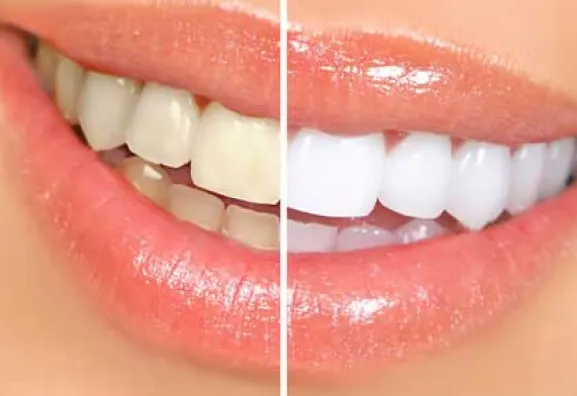
What is Teeth Whitening?
Tooth whitening or tooth bleaching is the process of lightening the color of human teeth. Whitening is often desirable when teeth become yellowed over time for a number of reasons, and can be achieved by changing the intrinsic or extrinsic color of the tooth enamel.
Learn more about Teeth Whitening
Teeth whitening isn’t permanent. It can last for few months – it varies from person to person. The whitening effect won’t last as long if you smoke or drink red wine, tea or coffee, which can all stain your teeth.
it’s important to understand that your teeth are especially susceptible to discoloration and staining immediately after teeth whitening. Thus, what you do after teeth whitening, especially in the first 48 hours after treatment, determines how well your results will last.
Smoking and Vaping can cause discoloration and staining on your teeth. That is because the nicotine in e-cigarettes is yellow, and it can cling to your teeth and cause them to yellow over time. In addition, the flavorings in e-cigarettes can also stain your teeth
The white patchy, streaky, or lined look of teeth after whitening is normal. This happen because the whitening gel that is used to professionally whiten your teeth (in-office treatment), is quite powerful and contains hydrogen peroxide. This will dehydrate your tooth enamel, causing it to exhibit bright white patches.
By prioritising teeth whitening before undergoing composite bonding, you can achieve a more uniform and harmonious outcome. Remember, consulting with a qualified cosmetic dentist is crucial to determine the best treatment plan for your unique needs.
If you choose to whiten your teeth after composite bonding, your natural teeth will become brighter, but the dental bonding will remain the same. This could cause your dental bonding to appear stained and create a contrast between your natural teeth and the bonded areas


